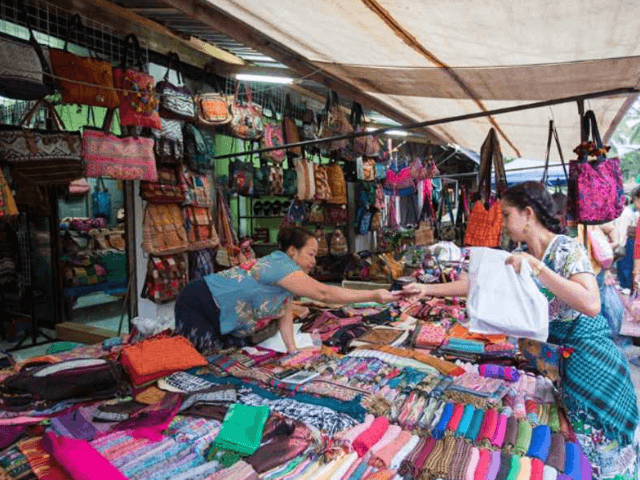Discover the magic of the Mid-Autumn Festival in Vietnam, with lanterns, mooncakes, lion dances, and family traditions. A must-see for anyone planning Vietnam travel in autumn.
TABLE OF CONTENTS
1
Origins and History of the Mid-Autumn Festival
2
When is the Mid-Autumn Festival in Vietnam?
3
Cultural Significance of the Festival
4
Traditional Customs and Practices
Mooncakes: The Heart of the Festival
Lion Dance (Múa Lân) Performances
Lanterns and Light Processions
5
How Vietnamese Families Celebrate Today
6
Regional Variations Across Vietnam
7
Foods Beyond Mooncakes
8
Mid-Autumn Festival in Modern Vietnam
9
Tourist Experience: How Visitors Can Join
10
Travel Tips for Experiencing the Festival
11
Frequently Asked Questions (FAQs)
12
The Spirit of Reunion and Joy
When you think of Vietnam travel, images of bustling markets, breathtaking landscapes, and delicious street food may come to mind. But if you visit in autumn, you’ll find something even more magical: the Mid-Autumn Festival (Tết Trung Thu).
Held on the 15th day of the 8th lunar month (usually September or early October), this festival transforms Vietnam’s streets into a vibrant tapestry of lanterns, mooncakes, lion dances, and family celebrations. Known as the Children’s Festival, it’s one of Vietnam’s most beloved traditions and a perfect cultural experience for travelers.
In this guide, we’ll explore the origins, customs, modern celebrations, and travel tips for experiencing the Mid-Autumn Festival in Vietnam.
.png)
Origins and History of the Mid-Autumn Festival
The Mid-Autumn Festival has roots going back over 1,000 years, originally tied to agricultural life. Farmers celebrated the harvest and gave thanks for the abundance under the bright harvest moon.
While the festival came to Vietnam from China, it has evolved with its own Vietnamese identity. Unlike in China, where the festival emphasizes romance and moon worship, in Vietnam it’s mainly a children’s festival - a time when families show love to their kids with gifts, games, and storytelling.
When is the Mid-Autumn Festival in Vietnam?
- Date: 15th day of the 8th lunar month (varies yearly, usually September). This year is on October 6th, 2025
- Significance: The full harvest moon symbolizes prosperity, harmony, and family unity.
- Season: Autumn, a comfortable travel period with pleasant weather in many regions.
If you’re planning your Vietnam travel, this is one of the most rewarding times to visit.
Cultural Significance of the Festival
The Mid-Autumn Festival in Vietnam highlights three key values:
- Family Reunion – Much like Thanksgiving in the West, families come together for shared meals and moon gazing.
- Children’s Joy – Known as the Children’s Festival, it emphasizes happiness, gifts, and fun for kids.
- Gratitude and Renewal – The round moon represents wholeness, harmony, and blessings for the future.
.png)
Traditional Customs and Practices
Mooncakes: The Heart of the Festival
Mooncakes (bánh trung thu) are the festival’s signature food.
- Bánh nướng – Baked mooncakes with lotus seeds, mung beans, salted egg yolks.
- Bánh dẻo – Soft, chewy rice flour mooncakes with sweet fillings.
Today, you’ll also find modern versions with chocolate, ice cream, or fruit fillings. Sharing mooncakes represents family unity and gratitude.
.png)
Lion Dance (Múa Lân) Performances
Lion dances bring the streets alive with drumming, acrobatics, and vibrant costumes. Traditionally, they chase away evil spirits and bring good luck and prosperity. Children love following the lion troupes during the parades.
Lanterns and Light Processions
Lanterns are everywhere - from star-shaped paper lanterns to carp-shaped designs. Children carry them during parades, symbolizing light guiding the way to happiness and success.
How Vietnamese Families Celebrate Today
For Vietnamese families, Tết Trung Thu is both traditional and modern:
- Families gather to eat mooncakes and seasonal fruits like grapefruit and persimmons.
- Children parade the streets with lanterns, singing folk songs.
- Parents tell stories like Chú Cuội, the man in the moon, and Chị Hằng, the moon fairy.
- Schools and communities organize performances, games, and storytelling events.
Regional Variations Across Vietnam
The way people celebrate varies by region:
- Hanoi (North) – The Old Quarter lights up with lantern markets, especially on Hàng Mã Street. Hoan Kiem Lake is the center of parades and performances.
- Central Vietnam (Hue, Hoi An) – Hue emphasizes traditional rituals, while Hoi An hosts stunning lantern festivals, attracting travelers from all over the world.
- Southern Vietnam (Ho Chi Minh City, Mekong Delta) – District 5 (Chinatown) is the hub, with lion dances, lantern stalls, and festive crowds.
.png)
Foods Beyond Mooncakes
Mooncakes steal the spotlight, but other foods are just as important:
- Grapefruit and persimmons – Fruits symbolizing longevity and happiness.
- Taro – Represents good fortune.
- Green tea – A must-have pairing with mooncakes.
These foods connect the festival back to its agricultural roots.
Mid-Autumn Festival in Modern Vietnam
Today, the festival is both traditional and modern:
- Urban Celebrations – Lantern parades on major streets, shopping malls selling mooncakes, and cultural shows.
- Commercialization – Bakeries and hotels create luxury mooncake boxes, often exchanged as corporate gifts.
- Community Spirit – Despite modernization, families still prioritize time together, making it one of the most heartfelt festivals in Vietnam.
Tourist Experience: How Visitors Can Join
For travelers, the Mid-Autumn Festival is one of the best cultural experiences in Vietnam.
Best Places to Experience in Hanoi
- Hàng Mã Street (lantern market).
- Hoan Kiem Lake (street parades and performances).
Best Places in Ho Chi Minh City
- District 5 (Cholon / Chinatown) for lion dances and lantern shopping.
- Nguyen Hue Walking Street for public festivities.
Best Places in Central Vietnam
- Hoi An lantern festival along the Thu Bon River.
- Hue with its traditional royal-style celebrations.
Travel Tip: Book accommodation early - festive areas can get crowded!
Travel Tips for Experiencing the Festival
- Best Time to Visit: September (check lunar calendar).
- What to Pack: Comfortable clothes, a camera, and some cash for street lanterns and mooncakes.
- Cultural Etiquette: Be respectful during family gatherings, ask before taking photos of children, and try local mooncakes as a gesture of appreciation.
.png)
Frequently Asked Questions (FAQs)
1. When is the Mid-Autumn Festival in Vietnam?
It’s celebrated on the 15th day of the 8th lunar month, usually in September.
2. Why is it called the Children’s Festival?
Because it emphasizes children’s joy with lanterns, lion dances, and gifts.
3. What foods are eaten during the festival?
Mooncakes, grapefruit, persimmons, taro, and tea.
4. Where is the best place to see the festival in Vietnam?
Hoi An for lanterns, Hanoi’s Old Quarter for street parades, and Ho Chi Minh City’s Chinatown for lion dances.
5. Do tourists join the celebrations?
Yes, visitors are welcome to enjoy parades, buy lanterns, and taste mooncakes.
6. Is it a public holiday in Vietnam?
No, but it is a widely celebrated festival with city-wide events.
The Spirit of Reunion and Joy
The Mid-Autumn Festival in Vietnam is more than lanterns and mooncakes - it’s a reflection of Vietnam’s values of family, gratitude, and community.
For travelers, it offers a rare opportunity to witness Vietnam’s cultural richness, join in the festivities, and create lasting memories. Whether you’re walking through Hanoi’s glowing lantern streets or tasting your first mooncake by the Saigon River, the festival is an unforgettable highlight of Vietnam travel.











